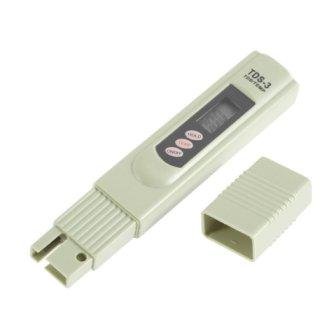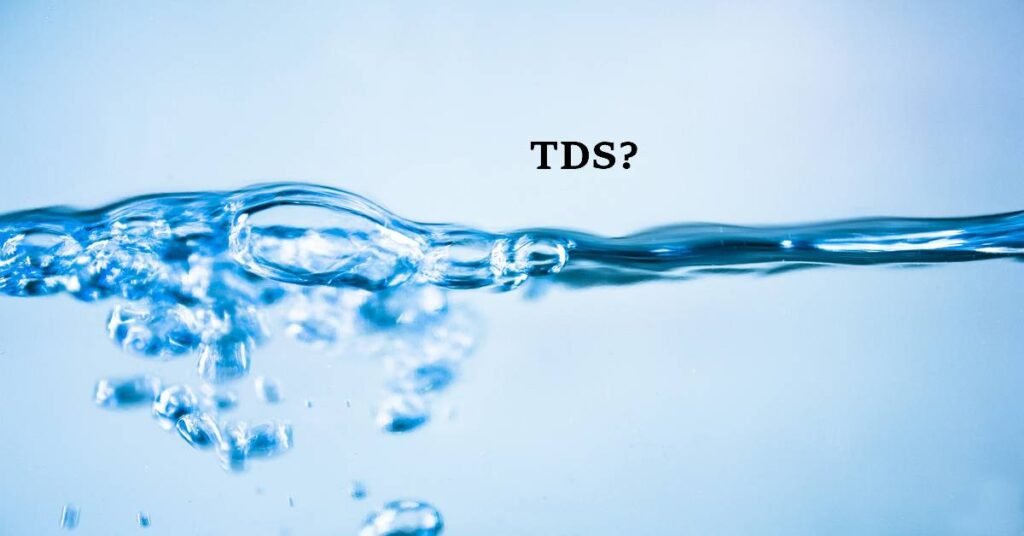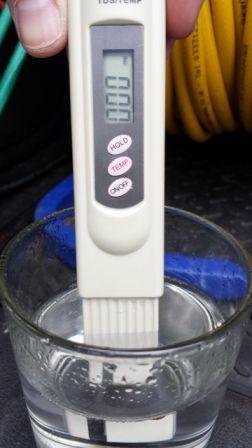Table of Contents
How to check the TDS levels of water at home? If you are looking for an answer, then you are at the right place. In this article, we will discuss in detail what is TDS?, Acceptable TDS levels, how to check TDS levels of water at home, 5 Best Digital TDS meters, why you need to remove excess TDS present in water, and how to remove excess TDS.
What is TDS?
TDS (Total Dissolved Solids) represents the concentration of dissolved solids present in the water.TDS includes mostly inorganic salts and a small amount of organic substance.
The inorganic salts present in water are calcium, magnesium, sodium, carbonates, potassium, nitrates, etc. The sources of these organic salts are both natural as well as result of human activities.
Besides these, groundwater contains harmful heavy metals like lead, mercury, and arsenic, which are extremely dangerous to health and cause serious health issues.
Dissolved solids present in water are not a problem, but dissolved solids present in high concentrations are the problem. Water with high TDS levels is not safe for health and, also, water with low TDS levels does not taste good. Therefore, water needs to get regulated for the level of TDS.
Water Purifiers decrease the level of contaminants present in water and control the right level of TDS making water safe and tasty.
TDS – Acceptable Levels
The Bureau of Indian Standards sets the acceptable level of TDS in water. The upper limit of TDS in water as per the Bureau of Indian Standard is 500 ppm, and as per the WHO, it is 300 ppm.
To make the concept clear, let us explain to you through the below-mentioned table, explaining the reason for acceptability and non-acceptability for different TDS levels.
| TDS Level (mg/L) | Reason for Acceptability/Non-acceptability |
| Less than 50 | Unacceptable level, water with such low TDS does not contain essential minerals |
| 50-150 | Acceptable level for areas having industrial pollution and other pollution |
| 150-250 | Acceptable and healthiest levels for people with cardiovascular disease |
| 250-350 | Acceptable level, groundwater of many places in India has this TDS level |
| 350-500 | Acceptable level as per the BIS standards |
| 500-900 | Not-acceptable, However using an RO water purifier can reduce the TDS under 500 ppm |
| 900-1200 | Not-acceptable, RO water purifier with TDS controller can regulate it under an acceptable range. |
| 1200-2000 | Water Not-acceptable for drinking, but some advanced water purifiers can reduce the TDS in this range to acceptable levels. |
| Above 2000 | Not-acceptable for drinking |
Now let’s have a look at the palatability quotient for different TDS levels.
| TDS (mg/L) | Palatability Quotient |
| Less than 300 | Excellent for drinking |
| 300-500 | Good |
| 500-900 | Fair |
| 900-1200 | Poor |
| Above 1200 | Unacceptable |
How to check TDS Levels of Water
TDS Levels of water can be measured using three methods, using a digital TDS meter, using an electrical conductivity meter, and using filter paper and weighing scale.
We will be discussing the digital TDS method as it the easiest and the simplest to check the TDS levels of water at home. You can easily measure the TDS levels of water at home using a digital TDS meter.
Digital TDS Meter
A Digital TDS meter is the easiest way to check the TDS of water at home. You do not need to use any formula or do any calculation; everything gets done by the Digital TDS meter for you. You can easily use it at home and get immediate results.

Procedure to check the TDS levels of water
1. Open the protective cap.
2. Switch on the TDS meter.
3. Immerse the meter into the water up to the mark given on the meter. It indicates the maximum immersion level.
4. If you see any air bubbles forming, lightly stir the meter to remove the air bubbles.
5. Wait for the reading to stabilizes (approx. 10-15 seconds),
6. Once the reading gets stabilized, press the HOLD button to see the reading on the meter.
7. If the meter displays an x10 symbol, you only multiply the reading by 10.
8. After use, shake off any excess water from the meter.
9. Replace the cap.
Best 5 Digital TDS meters to check the TDS levels of water at Home
| Best TDS Meter | View |
| Digital LCD TDS Meter for measuring TDS3/TEMP/PPM | View on Amazon |
| Yuv’S Digital TDS meter with Temperature And Water Quality Measurement | View on Amazon |
| GLUN Pre-Calibrated Pen Type Digital LCD TDS Meter | View on Amazon |
| HM Digital TDS3 TDS-3 Pocket TDS Meter | View on Amazon |
| Aptechdeals TDS Meter/Digital Tds Meter | View on Amazon |
Why should you remove the excess TDS from water?
As we have already mentioned, dissolved solids are not an issue until they are present under acceptable limits. TDS present at an unacceptable level are the cause of concern. Salts like calcium, potassium, magnesium are essential minerals present in water, but many water sources contain heavy metals like lead, arsenic, mercury, etc. that are very dangerous for your health.
Sources of these dissolved solids could be both natural and a result of human activities like agricultural activities, industrial wastewater, chemical treatment of drinking water, and many more.
TDS level of more than 500 is not suitable for drinking and poses a threat to your health. The presence of heavy metals in your water can cause serious health issues and also lead to cancer.
Therefore, we need to remove the excess TDS from water and make it safe for drinking.
How should you remove the excess TDS from water?
We will be discussing the Reverse Osmosis method to remove the excess TDS present in water as it the most effective technology in eliminating dissolved solids from water.
Reverse Osmosis
Reverse Osmosis is a method used by most water purifiers to remove the excess TDS present in water. It is one of the membrane filtration technologies in which water flows through a semi-permeable membrane having a pore size of 0.0001 microns.
Dissolved solids are larger than the membrane’s pore size and get trapped on its surface and, water molecules pass through it.
Conclusion
In this article, we have learned how to check TDS levels of water. Why excessive TDS is harmful to health, and how to regulate the TDS levels under permissible limits using RO Water Purifiers. We have also mentioned the 5 best digital TDS meters available in the market.
Related Posts:
- 10 Best Water Purifier for your home in India, 2021- Reviews and Buyer’s Guide
- RO (Reverse Osmosis) Water Purifier- Advantages and Disadvantages
- UF (Ultra- Filtration) Water Purifier- Advantages and Disadvantages
- UV Water Purifier- Advantages and Disadvantages
- RO vs UV vs UF- Difference between Water Purifiers


